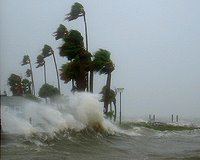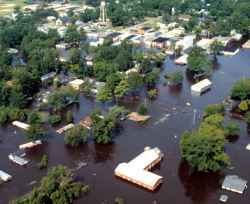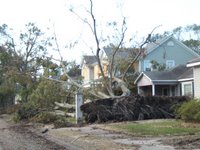 "Preventing the loss of life and minimizing the damage to property from hurricanes are responsibilities that are shared by all."
"Preventing the loss of life and minimizing the damage to property from hurricanes are responsibilities that are shared by all." Throughout this Web site, information has been provided regarding actions that you can take based on specific hurricane hazards. The most important thing that you can do is to be informed and prepared. Disaster prevention includes both being prepared as well as reducing damages (mitigation).
Disaster Prevention should include:
• Developing a Family Plan
• Creating a Disaster Supply Kit
• Having a Place to Go
• Securing your Home
• Having a Pet Plan
One of the most important decisions you will have to make is "Should I Evacuate?"
If you are asked to evacuate, you should do so without delay. But unless you live in a coastal or low-lying area, an area that floods frequently, or in manufactured housing, it is unlikely that emergency managers will ask you to evacuate. That means that it is important for you and your family to HAVE A PLAN that makes you as safe as possible in your home.
Disaster prevention includes modifying your home to strengthen it against storms so that you can be as safe as possible. It also includes having the supplies on hand to weather the storm. The suggestions provided here are only guides. You should use common sense in your disaster prevention.
- DEVELOP A FAMILY PLAN - Your family's plan should be based on your vulnerability to the Hurricane Hazards. You should keep a written plan and share your plan with other friends or family.
- CREATE A DISASTER SUPPLY KIT - There are certain items you need to have regardless of where you ride out a hurricane. The disaster supply kit is a useful tool when you evacuate as well as making you as safe as possible in your home.
- SECURE YOUR HOME - There are things that you can do to make your home more secure and able to withstand stronger storms.
- ONLINE VULNERABILITY INFO - There are web sites that can give you information about your communities vulnerability to specific hazards. These include hurricanes as well as other weather related hazards.








